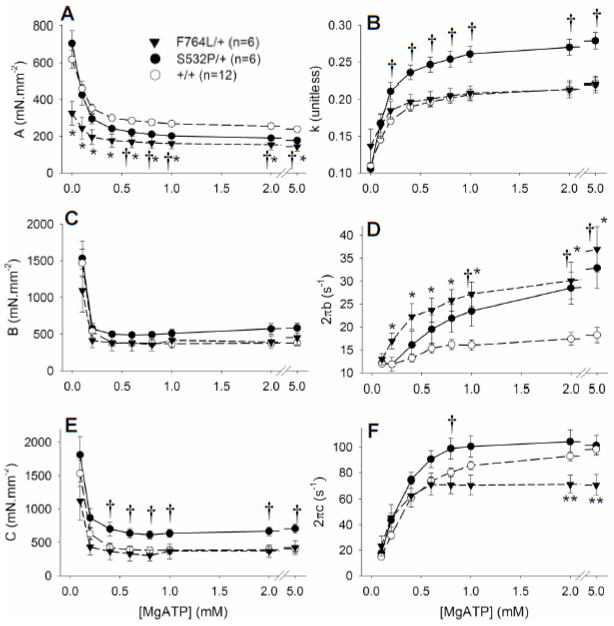Figure 4.
Model parameters over varying MgATP concentrations. A and B. Parameters A and k, which reflect the passive viscoelastic stiffness characteristics of the muscle strips, demonstrated significantly lower stiffness, A, in the DCM mutants. This can be most easily seen in the raw data of Figures 3A and 3C as lower values for the elastic moduli in both mutants. The higher value for k in the S532L/+ indicates a higher viscous rather than elastic quality in the myocardial viscoelastic stiffness. C. The magnitude B was not different among the groups. D. The rate parameter 2πb, which reflects the rate of force development after quick stretch, was significantly higher in the DCM mutants compared to respective controls at higher MgATP concentrations. E. Magnitude C was elevated in the S532P/+ and, given no change in rigor stiffness with this mutation (Figure 3D), indicates a higher myosin crossbridge duty ratio. F. The rate parameter 2πc, which reflects the myosin crossbridge detachment rate, was significantly lower in the F764L/+ compared to +/+ at high MgATP, and significantly higher in the S532P/+ at 0.8 mM MgATP. *P<0.05 and **P<0.01 for F764L/+ compared to controls, †P<0.05 for S532P/+ compared to controls.

